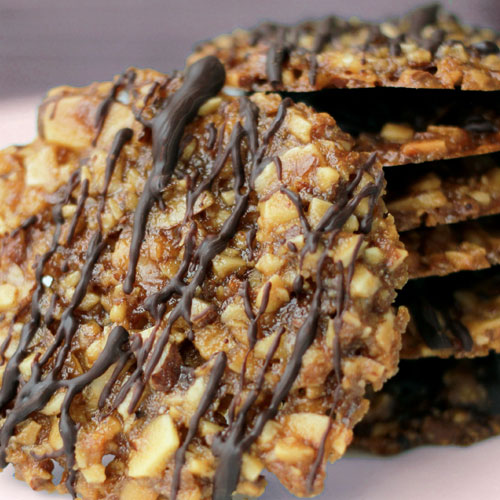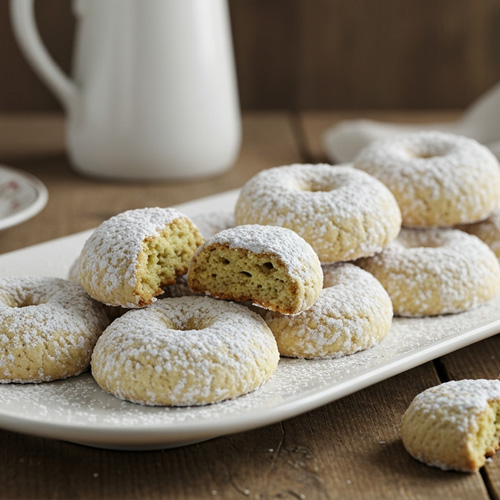Florentine Cookies: A European Classic
Florentine cookies may sound Italian, but their roots likely lie elsewhere. Historians believe French pastry chefs created them, possibly while working for the Medici family during their time in France.
These thin, crisp cookies blend chopped nuts often almonds or hazelnuts, with candied fruit and caramelized sugar or honey. Once baked, they get a glossy layer of dark chocolate on one side.
Their nutty crunch and elegant look made them popular with European aristocrats. Today, they’re a favorite around the holidays, cherished for their rich flavor and delicate texture.
French or Italian, it doesn’t matter. Florentines are a timeless treat—simple, sophisticated, and unforgettable.
Florentine Cookie Variations: Chocolate, Nuts & More
Some people love them just as they are simple and nutty, with a caramel-like crunch. Others like to take them up a notch with a drizzle of dark chocolate or a layer on the bottom for that extra touch of richness. You can also switch up the flavor with chopped hazelnuts, pistachios, or even a hint of orange zest.
Whether you’re baking them for a holiday gathering or savoring one quietly with your coffee, Florentine lace cookies are a timeless reminder that a cookie doesn’t have to be big or flashy to be unforgettable.
Florentine cookies may be delicate, but they’re surprisingly versatile. While the classic version features sliced almonds and a caramelized sugar base, there’s plenty of room to get creative with flavor and texture. Below are some popular ways to switch things up.
Chocolate-Coated:
Spread or drizzle melted dark, milk, or even white chocolate on the flat side of each cookie. Let it set before serving for a rich finish.
Nut Swap:
Replace almonds with hazelnuts, pecans, or pistachios. Just make sure they’re finely chopped for even baking.
Citrus Twist:
Add a bit of orange zest or mix in some candied orange peel to brighten up the flavor.
Dried Fruit Add-Ins:
Try chopped dried cranberries, cherries, or apricots for a pop of sweetness and color.
Spiced Florentines:
A pinch of cinnamon, cardamom, or even a dash of ginger can add warm, holiday-friendly flavor.
Sandwich Style:
Spread chocolate on the bottom of one cookie and press another on top to make a crisp, elegant sandwich.
Whether you keep them classic or go bold with flavor, Florentines are a fun way to get creative while still honoring a timeless tradition.
Storage
Florentine cookies are delicate, so proper storage is key to keeping their signature crispness and flavor intact.
Store completely cooled cookies in an airtight container at room temperature. Place parchment or wax paper between layers to prevent sticking or breaking. Keep the container in a cool, dry place, away from direct sunlight or heat. (Up to 5 Days)
For longer storage, you can freeze Florentine cookies. Layer them with parchment paper in a freezer-safe container or bag. (Up to 1 Month)
When ready to eat, let them come to room temperature before serving. This helps bring back the crunch.
Avoid Humidity Florentines don’t like moisture! Humidity can make them soft or chewy instead of crisp. If you live in a humid climate, consider storing them in the fridge (but make sure they’re in an airtight container with paper between layers to prevent sticking).
Tip? If your cookies lose a bit of their crunch, pop them in a 300°F (150°C) oven for 2–3 minutes, then cool completely on a rack—they’ll crisp right back up!













